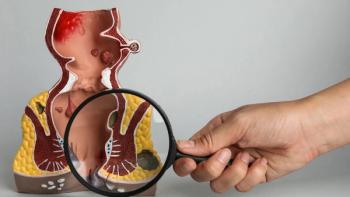
Sasanlimab-BCG Combo May Delay Recurrence in Bladder Cancer
Adding subcutaneous sasanlimab to BCG improved recurrence-free survival in non–muscle-invasive bladder cancer, according to Dr. Petros Grivas.
Adding subcutaneous sasanlimab to Bacillus Calmette-Guérin (BCG) improved recurrence-free survival in non–muscle-invasive bladder cancer, according to findings from the CREST trial presented at the 2025 ASCO Annual Meeting.
In an interview with CURE, Dr. Petros Grivas explained that the benefit was consistent across subgroups, including patients with T1 disease and carcinoma in situ.
While the treatment’s toxicity was as expected for a checkpoint inhibitor, the trial was not designed to assess outcomes like metastasis-free or overall survival. If approved, the use of sasanlimab alongside BCG could raise practical questions about care delivery and infrastructure needs.
Grivas is the clinical director of the Genitourinary Cancers Program and a professor in the Clinical Research Division at Fred Hutch Cancer Center in Seattle; he also serves as a professor in the Division of Hematology and Oncology at the University of Washington School of Medicine.
Transcript:
Question: What were some of the most promising advances in bladder cancer presented at the meeting, and how might they change the way you care for patients moving forward?
Answer: I'll start with non–muscle-invasive bladder cancer. We saw data from Dr. Powles on the CREST trial, which evaluated intravesical BCG (Bacillus Calmette-Guérin) induction and maintenance with or without subcutaneous sasanlimab, a subcutaneously administered checkpoint inhibitor.
The goal of the trial was to determine whether adding sasanlimab to BCG could improve outcomes compared with BCG alone. The trial was positive — the addition of sasanlimab appeared to improve recurrence-free survival. This is a promising development with the potential to change clinical practice, although we are still waiting to see how regulatory agencies will respond regarding the possible approval of sasanlimab in combination with BCG.
Dr. Powles also presented a subset analysis at the ASCO annual meeting, which showed that the benefit of adding sasanlimab was consistent across different patient subgroups — including those with T1 disease and those with carcinoma in situ (CIS). The toxicity profile was as expected for a systemically administered checkpoint inhibitor.
That said, there are important considerations. The primary endpoint of the trial was recurrence of high-grade disease, and most of those events were non–muscle-invasive recurrences. Only a few patients progressed to muscle-invasive disease, and there were very few cases of metastasis or death. As a result, the trial did not provide sufficient data to evaluate metastasis-free survival or overall survival.
If sasanlimab does receive regulatory approval, it will raise practical questions about care delivery — particularly regarding logistics. For example, which specialty will be responsible for administering the drug: urology or medical oncology? Do clinics have the necessary infrastructure, space, staff, and resources — including nurses and pharmacists — to give this treatment and monitor patients for potential immune-related side effects?
There’s a lot still to be determined.
Transcript has been edited for clarity and conciseness.
For more news on cancer updates, research and education, don’t forget to




